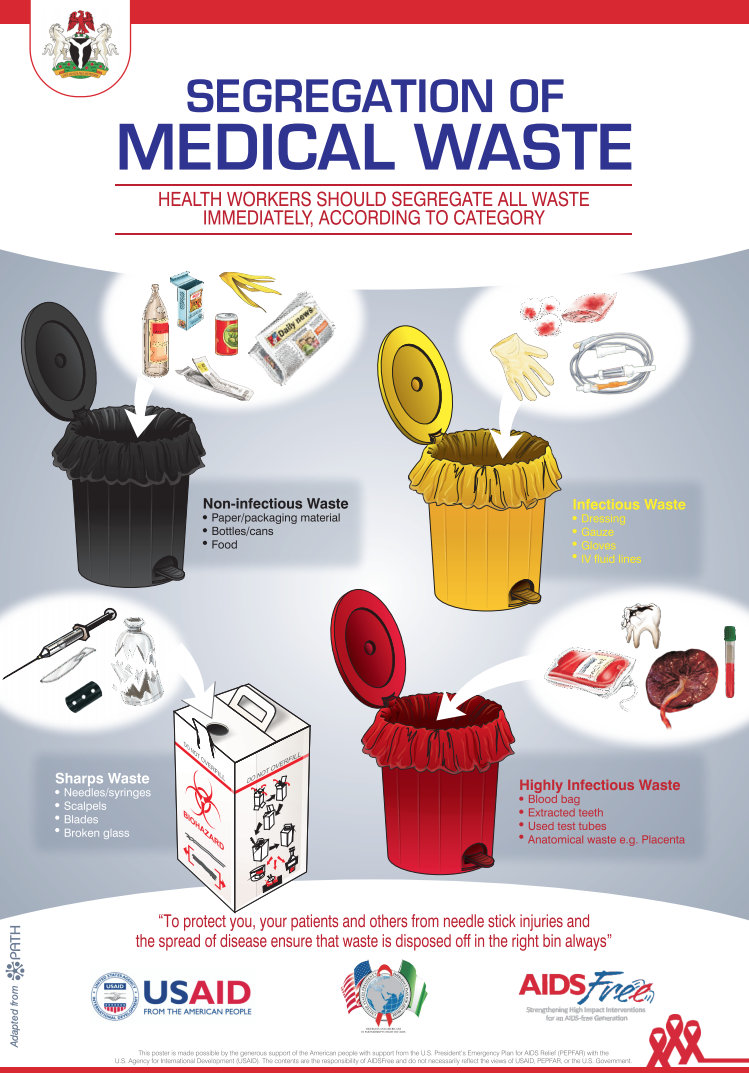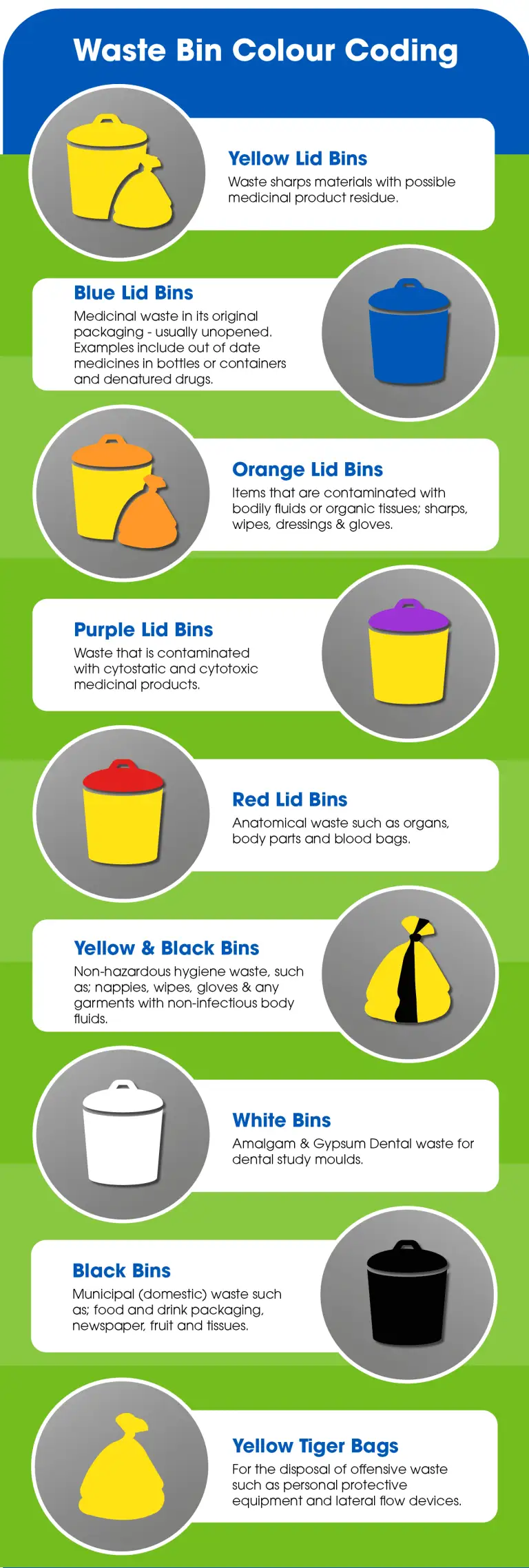Eco-Friendly Solutions for Medical Waste Removal: Focusing On Safety And Security and Conformity
Wiki Article
Best Practices for Medical Waste Administration
Clinical waste administration is a crucial facet of medical care centers' procedures to ensure the safety of clients, personnel, and the atmosphere. Applying ideal techniques in clinical waste monitoring is essential to minimize the risks associated with dangerous waste. This includes proper segregation and categorization of waste, ensuring its risk-free storage and labeling, adhering to regulatory standards, and making use of reliable disposal approaches. By complying with these finest methods, medical care centers can minimize the capacity for infections, injuries, and contamination triggered by improper handling and disposal of clinical waste. This intro intends to supply an introduction of the significance of best practices for clinical waste administration and the subsequent areas will certainly dig into each technique in information.Partition and Categorization
In the area of medical waste management, appropriate segregation and classification are vital techniques for making sure the safe and reliable disposal of healthcare-related materials. Clinical waste is generated from numerous sources, consisting of healthcare facilities, clinics, labs, and various other health care centers. It contains a wide variety of products, such as needles, syringes, plasters, gloves, and pharmaceutical waste.Partition includes the methodical splitting up of various kinds of clinical waste based on their attributes and prospective dangers. Sharps waste, such as needles and blades, must be put in puncture-resistant containers to stop injuries and the spread of infectious diseases.
Categorization is the process of classifying clinical waste right into various groups based upon its prospective dangers. WasteX Medical Waste Disposal. These classifications may include transmittable waste, unsafe waste, pharmaceutical waste, and basic waste. By categorizing waste, healthcare facilities can figure out the proper disposal methods and ensure conformity with regional policies and standards
Appropriate segregation and classification of medical waste not just safeguard the health and wellness and safety of medical care workers and the basic public however also add to the general effectiveness and efficiency of waste management. It lowers the danger of crashes, lessens environmental effects, and promotes accountable waste disposal methods.
Proper Storage Space and Labeling
To make certain the effective and secure disposal of medical waste, medical care facilities must abide by proper storage space and labeling techniques. Appropriate storage space and labeling play a vital role in preserving the honesty of medical waste administration systems and securing the health and wellness of medical care workers, clients, and the basic public.When it comes to storage, it is crucial to have assigned areas especially designed for different sorts of clinical waste. These locations should be safe, well-ventilated, and outfitted with appropriate containers that meet regulatory requirements. Partition and classification of waste need to also be considered to prevent cross-contamination and possible threats.
Additionally, proper labeling is important for efficient waste administration. Each container needs to be plainly identified with the proper signs, color-coding, and details concerning the waste it has. Tags need to include details such as the type of waste, date of collection, and the name of the generator. This ensures that all individuals handling the waste can easily identify and handle it correctly.
Regular tracking and assessment of storage areas and containers are crucial to recognize any type of problems or violations. Team needs to be trained on proper storage space and labeling techniques, highlighting the value of conformity with methods and guidelines.
Safe Transportation and Handling
Ensuring the secure and correct transport and handling of medical waste is essential for maintaining the stability of waste management systems and guarding the health and wellness of all entailed. Medical waste, that includes products infected with contagious materials, drugs, and other harmful substances, have to be carried in a manner that stops leakages, spills, and prospective contamination.It is vital to use puncture-resistant and watertight containers that are especially designed for medical waste. Furthermore, waste must be set apart based on its nature and kind to prevent cross-contamination.
During transportation, it is essential to ensure that waste containers are securely fastened and kept in a steady way. Cars made use of for moving medical waste should be equipped with suitable security functions, such as spill containment systems, to reduce the danger of any type of leaks or spills (medical waste removal service). Motorists must get training on appropriate handling and emergency reaction procedures to effectively address any unpredicted cases
In addition, the transport and handling of medical waste ought to adhere to all relevant laws and standards stated by local, state, and federal authorities. Normal assessments and audits must be carried out to assess compliance and determine any type of areas for renovation.

Compliance With Regulatory Standards
Preserving conformity with governing guidelines is vital for effective medical waste monitoring. These guidelines are implemented to secure public health and the setting by making sure that medical waste is effectively managed, treated, and disposed of. medical waste disposal service. Compliance with regulative standards assists to stop the spread of transmittable illness, decrease prospective hazards, and minimize the overall effect of clinical waste on the atmosphereTo attain compliance, medical care facilities need to stay notified about the certain laws regulating medical waste monitoring in their jurisdiction. These guidelines may vary from nation to nation, and even within various states or areas. It is essential for medical care facilities to have a comprehensive understanding of these standards and to implement proper strategies and procedures to make certain conformity.
One key element of conformity is the correct segregation and labeling of different sorts of clinical waste. This includes separating sharps from various other waste, along with classifying waste based on its prospective dangers. Medical care centers have to additionally ensure that medical waste is kept in proper containers which these containers are effectively labeled and sealed.
Additionally, compliance with regulative standards calls for healthcare facilities to establish appropriate training and education programs for employee associated with clinical waste administration - WasteX Medical Waste Disposal. This consists of giving training on waste segregation, dealing with, and disposal procedures, as well as the correct use individual protective equipment
Regular monitoring and audits are additionally crucial to make certain recurring compliance with regulatory standards. This entails carrying out regular inspections of waste storage space locations, documenting waste management treatments, and preserving records of garbage disposal.
Efficient Disposal Methods
Health care facilities should use reliable disposal techniques for proper monitoring of medical waste - WasteX Medical Waste Disposal. Inappropriate disposal of medical waste can present serious wellness and environmental threats. There are several approaches that can be used to properly dispose of medical waste, ensuring the security of medical care workers, people, and the basic publicOne typically made use of method is incineration. Burners can securely burn clinical waste at heats, decreasing the quantity and destroying any type of possibly hazardous virus. Nevertheless, incineration can be costly and may launch harmful contaminants right into the air otherwise properly controlled.
An additional method is autoclaving, which includes subjecting the waste to high-pressure vapor. This process eliminates microorganisms, viruses, and various other microbes, providing the waste safe for disposal in normal waste streams. Autoclaving is a effective and eco-friendly approach, but it requires specific tools and trained workers.
Chemical disinfection is likewise utilized in many cases, where liquid chemicals are related to the waste to sanitize it. This approach is much less commonly utilized because of problems concerning the effectiveness of chemical disinfection and the potential for chemical residues to pollute have a peek at this website the atmosphere.
Along with these approaches, medical care facilities should also execute appropriate partition, product packaging, and labeling of clinical waste to guarantee its risk-free handling and disposal. Routine training and education and learning of personnel on correct waste administration practices are essential to preserving efficient disposal techniques.
Final Thought

Medical waste administration is an important element of healthcare centers' operations to make certain the security of patients, team, and the environment. Applying finest techniques in medical waste monitoring is important to decrease the dangers linked with harmful waste. These categories may consist of contagious waste, dangerous waste, pharmaceutical waste, and general waste.In verdict, implementing ideal practices for medical waste monitoring is essential for making certain the safety of health care employees, clients, and the setting. By properly setting apart and classifying waste, saving and labeling it properly, making certain safe transport and handling, complying with regulatory standards, and employing efficient disposal techniques, medical care facilities can efficiently handle and decrease the risks connected with medical waste.
Report this wiki page